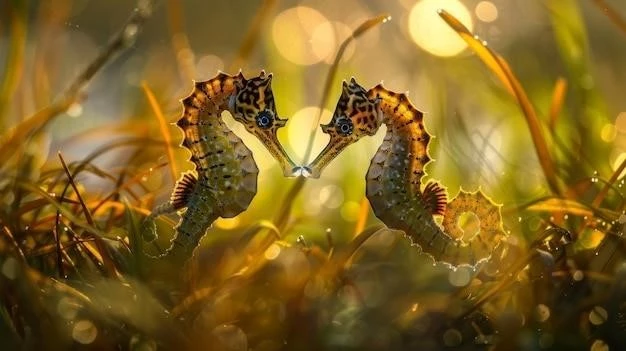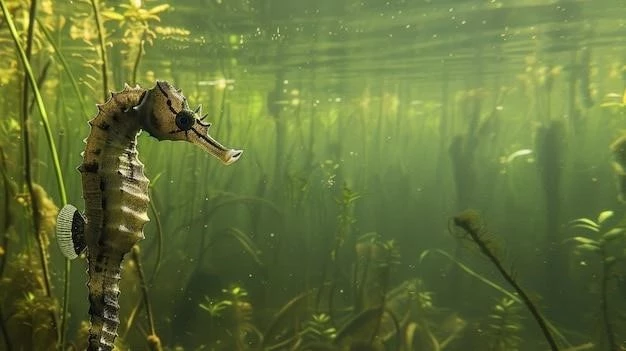Nature’s Deception: The Art of Mimicry and Camouflage in the Animal World
The natural world is a tapestry of intricate adaptations‚ where survival hinges on a delicate balance of predator and prey. Among the most fascinating strategies employed by animals to navigate this delicate dance is the art of mimicry and camouflage. These remarkable adaptations‚ honed over millions of years of evolution‚ are a testament to the power of natural selection‚ showcasing the cunning and ingenuity that permeates the animal kingdom.

Camouflage: Blending into the Background
Camouflage‚ the art of concealing oneself from predators or prey‚ is a ubiquitous strategy across the animal kingdom. It involves blending seamlessly with the surrounding environment‚ rendering the animal virtually invisible to those around it. The effectiveness of camouflage relies on a combination of factors‚ including:
- Color Matching: Animals often adopt coloration that closely matches their surroundings‚ mimicking the shades‚ patterns‚ and textures of their environment. For example‚ the Arctic fox’s white fur provides excellent camouflage against the snow‚ while the leopard’s spotted coat blends seamlessly with dappled sunlight filtering through the forest canopy.
- Pattern Disruption: Disruptive patterns‚ such as stripes‚ spots‚ or blotches‚ can break up an animal’s outline‚ making it harder for predators to identify them. Zebras’ stripes‚ for instance‚ disrupt their body shape‚ making it difficult for lions to target individual animals in a herd.
- Texture and Shape: Some animals mimic the texture of their surroundings to further enhance their camouflage. For example‚ stick insects resemble twigs‚ blending seamlessly into their arboreal habitat.
Mimicry: Deception Through Imitation
Mimicry‚ a more active form of deception‚ involves one species evolving to resemble another‚ often to gain an advantage. There are several forms of mimicry‚ each with its own unique purpose:
- Batesian Mimicry: This type of mimicry involves a harmless species evolving to resemble a dangerous one‚ deterring predators. For instance‚ the viceroy butterfly mimics the monarch butterfly‚ which is toxic to birds. Predators‚ having learned to avoid monarchs‚ also avoid viceroys‚ granting them protection.
- Müllerian Mimicry: This form of mimicry involves two or more unpalatable species evolving to resemble each other‚ reinforcing the signal of their unpalatability to predators. For example‚ several species of venomous snakes have evolved similar warning patterns‚ amplifying the message to potential predators.
- Aggressive Mimicry: This type of mimicry involves a predator mimicking a harmless or attractive species to lure its prey. For example‚ the anglerfish uses a fleshy appendage resembling a lure to attract unsuspecting fish within striking distance.
The Evolutionary Arms Race: A Constant Game of Cat and Mouse
The evolution of mimicry and camouflage is a testament to the ongoing arms race between predators and prey. As predators develop new strategies for hunting‚ prey species evolve counter-adaptations to evade them. This continuous cycle of adaptation and counter-adaptation drives the diversification and complexity of the natural world.

The Importance of Mimicry and Camouflage
Beyond their fascinating nature‚ mimicry and camouflage play critical roles in the ecosystem. They contribute to:
- Population Regulation: By providing prey with a means of evading predators‚ mimicry and camouflage help regulate population dynamics‚ preventing overgrazing and maintaining ecological balance.
- Biodiversity: The diversity of mimicry and camouflage strategies contributes to the richness and complexity of the animal kingdom‚ fostering a wider range of species and interactions.
- Inspiration for Human Innovation: Nature’s ingenious solutions to camouflage and mimicry inspire human ingenuity‚ finding applications in areas like military technology‚ design‚ and even medicine.
Conclusion: A Symphony of Deception
The art of mimicry and camouflage is a testament to the power of natural selection‚ showcasing the incredible adaptations that have evolved to ensure survival in the animal kingdom. These strategies‚ ranging from subtle color matching to elaborate mimicry‚ are a constant reminder of the intricate and often deceptive nature of the natural world.










